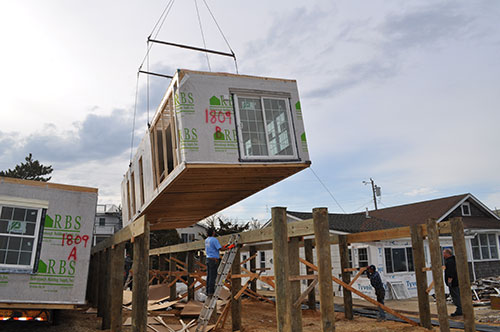 Fast, Strong, Reliable — Using Modular Construction for Disaster Recovery
Fast, Strong, Reliable — Using Modular Construction for Disaster Recovery
When disaster strikes, families can lose everything. Their home, their personal belongings, and their sense of safety. While the homeowners goal is get their life back to “normal” as soon as possible, it is a process that just doesn’t happen as quickly as they would like. Insurance companies, local red tape, and government regulations can hinder the process of quickly replacing a destroyed or damaged home.
Overcoming the Obstacles
When it is time to rebuild, modular construction can be the solution to solve multiple issues in disaster areas. When recovery starts, typical frustrations homeowners face include:
- Lack of contractor availability
- Limited amount of contractors
- Price inflation of materials from local suppliers
- Increased costs for required labor
- Inspection delays
- And the list goes on…
Modular construction minimizes the dependence on local resources by placing 85% of the home’s construction effort offsite where costs are virtually unaffected. Since most inspections are done at the factory, the strain on local inspection resources reduced. Construction can take place simultaneously with the preparation of the site.
Peace of Mind
Modular construction is inherently stronger than site build construction. Modules have to be built to be transported on a carrier to the jobsite and then lifted by a crane into position. Each module is structurally independent. Once the modules are positioned on site, they are essentially interlocked to each other by either bolts, lag screws, straps, or a combination of all of these. This makes the structure much stronger than that provided using standard conventional construction.
After Hurricane Andrew hit in 1992, Federal Emergency Management Agency’s (FEMA) Mitigation Assessment Team conducted a study of various building types and how well they weathered the storm. In their summary the Mitigation Assessment team concluded that “in general, it was observed that masonry buildings and wood-framed modular buildings performed relatively well.” The report went on to state that “overall, relatively minimal structural damage was noted in modular housing developments. The module–to-module combination of the units appears to have provided an inherently rigid system that performed much better than conventional residential framing.”



